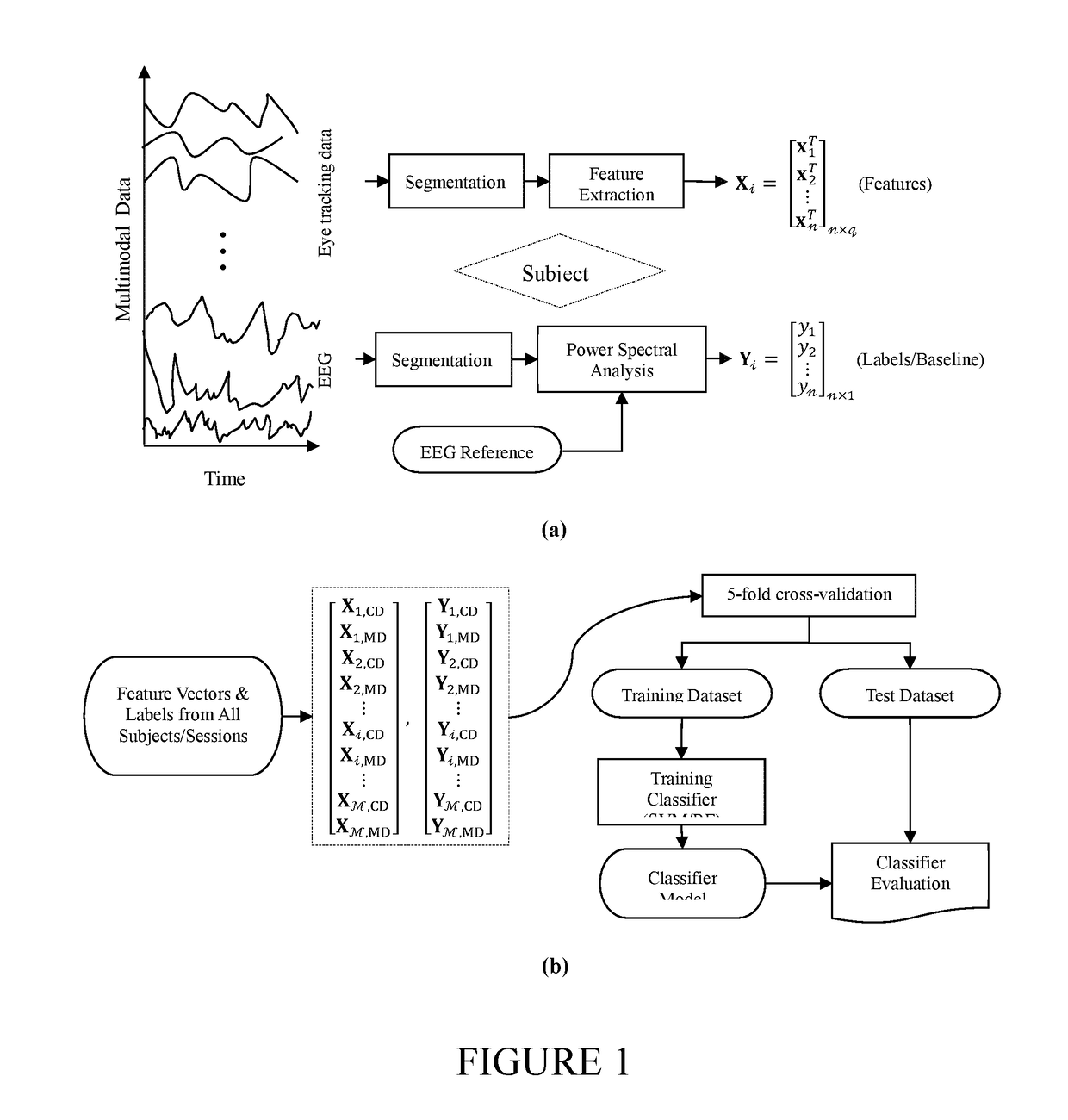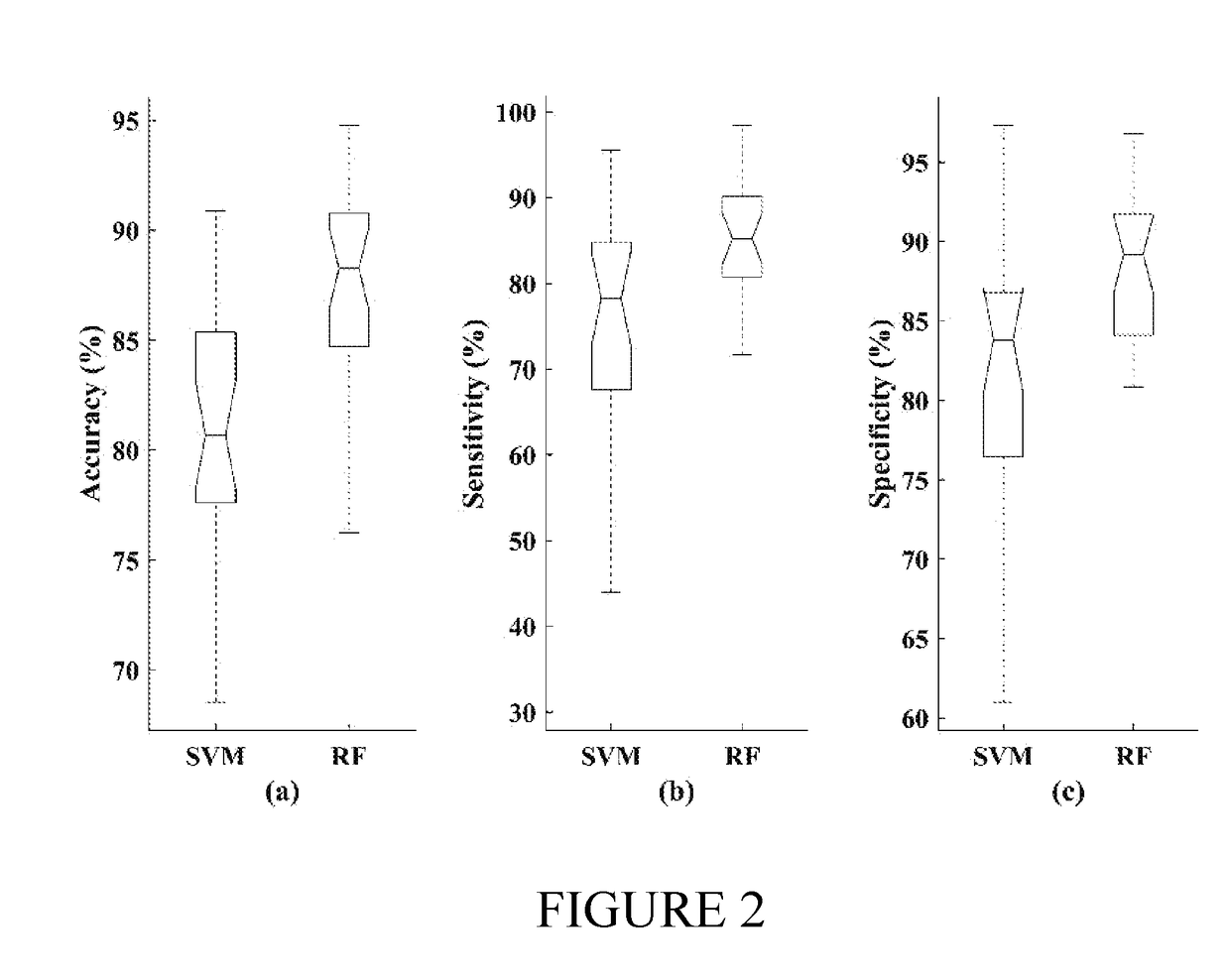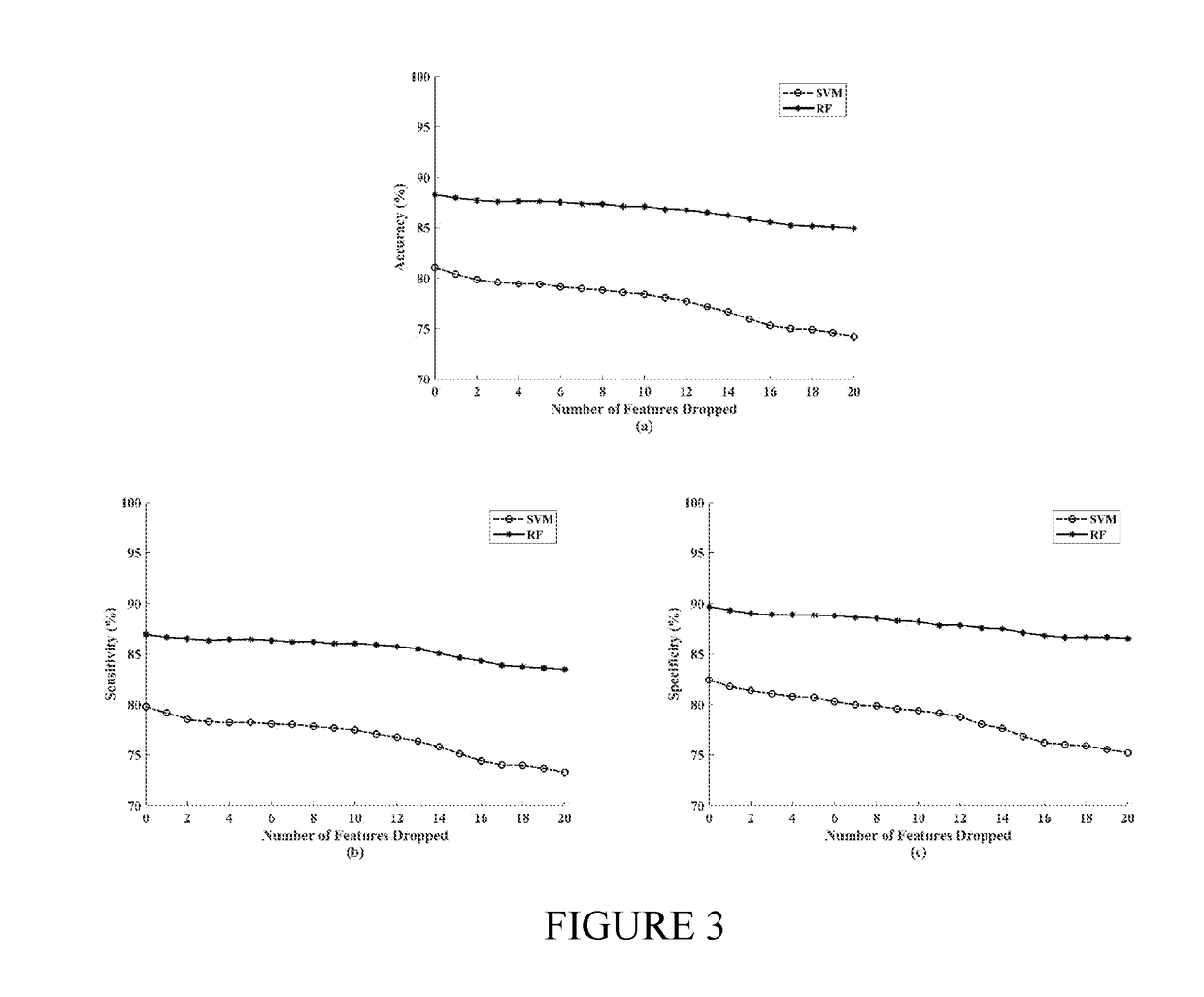Non-intrusive assessment of fatigue in drivers using eye tracking
a technology of eye tracking and fatigue assessment, applied in the field of eye tracking, can solve the problems of insufficient robustness against environmental and driving conditions, negatively affecting the effectiveness of these methods affecting the effectiveness of these methods, so as to prevent motor vehicle accidents, improve road safety, and improve the effect of safety
- Summary
- Abstract
- Description
- Claims
- Application Information
AI Technical Summary
Benefits of technology
Problems solved by technology
Method used
Image
Examples
Embodiment Construction
Materials and Methods
[0017]This section provides details of the driving simulator experiment conducted in this study and explains the eye tracking feature extraction, classifiers used for drowsiness detection, and processing of EEG data as the baseline.
Driving Simulator Experiment
[0018]This experiment was designed and conducted at the Somnolence Laboratory of Alcohol Countermeasure Systems Corp. (ACS), Toronto, Canada, in order to induce mild levels of drowsiness and fatigue in volunteers, participating in a simulated driving task, and to study the influence of the corresponding changes in the state of vigilance on driver visual behavioural patterns and physiological responses.
Subjects
[0019]Twenty-five volunteers (6 females, 19 males) with the mean (±standard deviation) age of 40.72 (±8.81) years completed the simulated driving experiment. All participants were given a written description summary of the objectives, procedures, and potential risks of the study as well as their rights...
PUM
 Login to View More
Login to View More Abstract
Description
Claims
Application Information
 Login to View More
Login to View More - R&D
- Intellectual Property
- Life Sciences
- Materials
- Tech Scout
- Unparalleled Data Quality
- Higher Quality Content
- 60% Fewer Hallucinations
Browse by: Latest US Patents, China's latest patents, Technical Efficacy Thesaurus, Application Domain, Technology Topic, Popular Technical Reports.
© 2025 PatSnap. All rights reserved.Legal|Privacy policy|Modern Slavery Act Transparency Statement|Sitemap|About US| Contact US: help@patsnap.com



